

| Identifying Riband Wave and Plain Wave |
| .............. |
| Riband Wave represents one of our most common and widespread moths. It is regularly attracted to light traps operated in urban areas, but will invariably turn up in much larger numbers in woodland. | ||
| .............. | ||
| The typical form of Riband Wave,
with its distinctive broad band running across all wings,
should not present any identification issues, even to
those new to recording moths. This identification guide is aimed more towards separating the non-banded form of Riband Wave (Idaea aversata f.remutata) and the less well marked Plain Wave (Idaea straminata), which is decidedly rarer. Of the two species, Riband Wave is by far the most widespread and common. The total number of individual moths we have recorded of each species (to Dec 2014) is 1, 595 Riband Wave, compared to just 60 Plain Wave. |
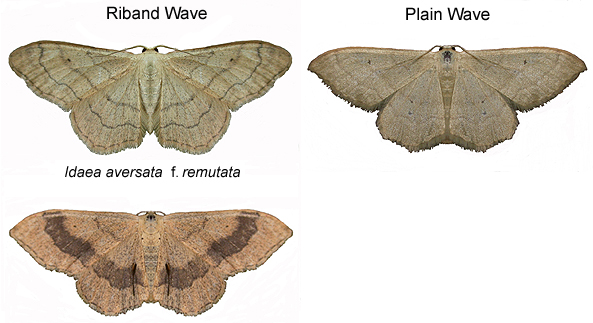 |
|
| .............. | ||
| This at least gives an idea how uncommon Plain Wave is in Nottinghamshire, so it should always be in mind when wishfully trying to turn that faded or worn Riband Wave into a Plain Wave - something we have all probably tried to do at some time. | ||
| 70.016 .... B&F 1713 .... Riband Wave Idaea aversata (Linnaeus,
1758) |
| Nottinghamshire
status and distribution: Very common and
widespread throughout the whole of Nottinghamshire.
Riband Wave occurs in all habitat types and will be
commonly attracted to light in suburban gardens. The non-banded form known as I aversata f.remutata is usually the more common. Flight period: There are several records for April, but none for May. The main flight period is from June to August, with a peak in July. There is a partial second generation flying from September to October. Identification features: Riband Wave occurs as two distinct forms and only the non-banded form will cause any confusion between the two species. The background colour of all wings, is a light sandy brown, lightly dusted with fine black scales giving a peppered appearance. |
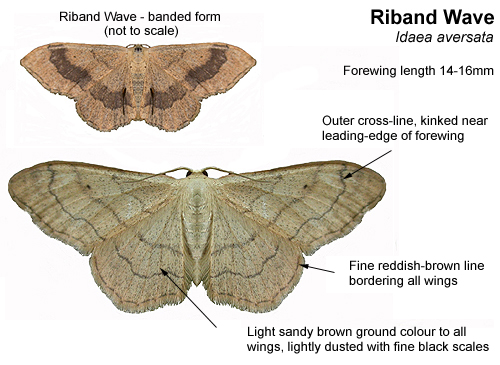 |
|
| .............. | ||
| There are three cross-lines which run through both forewing and hindwing, with the outer cross-line being the most prominent and sharper of the three. This cross-line is also kinked where it reaches the leading-edge of the forewing and is a useful identification feature. On some examples, the middle and inner-most cross-lines can be difficult to discern, but are always present, even on worn examples. The trailing-edge of both forewings and hindwings, are bordered by a fine reddish-brown line, not present on Plain Wave. | ||
| .............. | ||
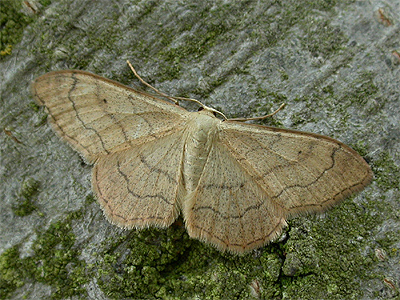 |
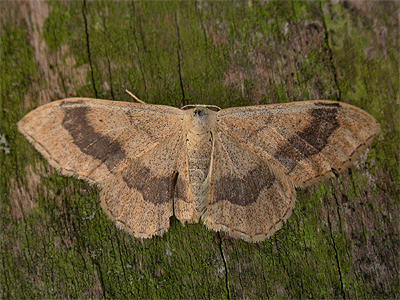 |
|
| 70.018 .... B&F 1715 .... Plain Wave
Idaea
straminata (Borkhausen, 1794) |
| Nottinghamshire
status and distribution: Scarce, but well
recorded from sites within the Sherwood Forest NNR.
Virtually all Nottinghamshire records, come from sites
geologically lying on Sherwood Sandstone, with a few
scattered records from sites east of the River Trent. Flight period: Flies from late June to August, with a pronounced peak in July. Identification features: Worn examples of the non-banded form of Riband Wave, can easily be confused with Plain Wave. But when seen for the first time, Plain Wave is a quite distinctive moth. An obvious difference between Plain Wave and Riband Wave, is ground colour of the wings. Generally lighter than Riband Wave, with no dusting of black scales, giving a silky or smooth appearance. Once seen, the difference between the two species is immediately obvious. |
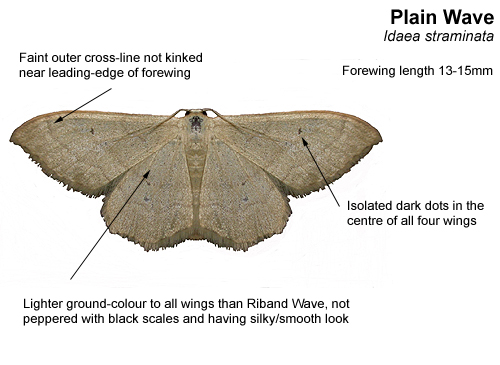 |
|
| .............. | ||
| Plain Wave
again has three cross-lines running through all four
wings, but the middle and inner cross-lines are barely
distinguishable, even on freshly emerged individuals. The
outer cross-line is the more distinctive of the three,
but is of the same shade of light brown found at the tip
of the forewing. Only just obvious enough to be
noticeable, there is no kink in the outer cross-line
where it reaches the leading edge of the forewing. On what is a very plain moth (hence the common name) the only dark marks are the isolated dots, found in the centre of all four wings, but placed near to the leading-edge of the forewing. |
||
| .............. | ||
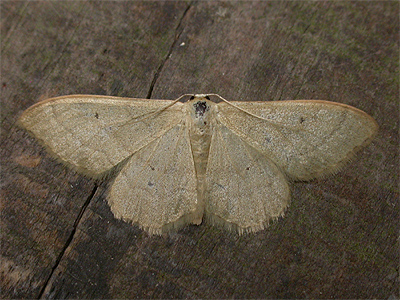 |
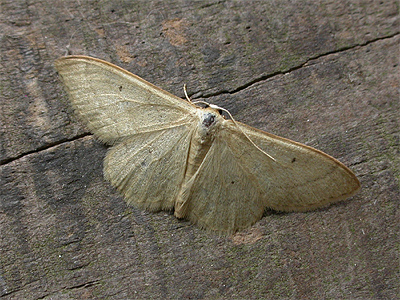 |